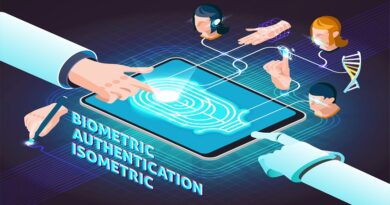Voice Technology: Enhancing Convenience and Accessibility
Voice technology, also called voice recognition, enables users to interact with computers, devices, and applications using spoken words and natural language instead of typing or clicking.
How does it work?
Speech recognition: It converts spoken words into text by analyzing acoustic patterns and matching them with a database of known words and patterns using mathematical models and signal-processing techniques.
Natural Language Processing (NLP): Once you convert spoken words into text, natural language processing comes into play. NLP focuses on understanding the meaning and intent behind the words. It involves parsing the text, identifying keywords and phrases, and analyzing the sentence’s grammatical structure. NLP algorithms use various techniques like part-of-speech tagging, syntactic analysis, and semantic understanding to extract the user’s intent and generate a meaningful response.
Machine Learning: Machine learning plays a crucial role in improving the accuracy and performance of voice technology systems. It involves training algorithms on large datasets of speech and text to learn patterns and make predictions. Through a process known as supervised learning, the algorithms learn to recognize and understand different accents, speech variations, and language nuances. As more data is fed into the system, the algorithms continuously improve their accuracy and ability to understand diverse speech patterns.
Voice Assistant or Application: Once the spoken words are transcribed and processed, the voice assistant or application generates a response based on the user’s intent. This could involve executing a specific command, retrieving information from a database, performing a task, or providing a spoken reply. The response is then communicated back to the user through synthesized speech or displayed as text.
Real-life Example
Users can simply speak their command or question aloud when interacting with a voice assistant. The device’s microphone picks up the spoken words, which are then processed using speech recognition algorithms. The algorithms convert the spoken words into text, which is then analyzed using natural language processing techniques.
For example, a user might say, “Hey Siri, what’s the weather like today?” The voice assistant recognizes the wake word “Hey Siri” and begins to hear the user’s request thanks to voice technology. The speech recognition component converts the subsequent words, “What’s the weather like today,” into text.
Future Scope
Improved User Interfaces: Voice technology will likely become a primary user interface, supplementing or replacing traditional graphical interfaces. With advancements in natural language understanding, voice assistants will become more conversational, intuitive, and capable of understanding complex commands and context. This will lead to enhanced user experiences across devices, applications, and services.
Smart Homes and IoT: Voice technology is pivotal for smart homes and IoT expansion, enabling users to control and interact with connected devices using voice commands for lights, thermostats, appliances, and security systems. Voice assistants will serve as central hubs, enabling seamless integration and automation within the smart home ecosystem.
Healthcare and Accessibility: Voice technology revolutionizes healthcare with hands-free interactions for medical professionals, voice-controlled medical devices, and enhanced patient monitoring. It can also enhance accessibility for individuals with disabilities, allowing them to control devices, access information, and communicate more effectively.
Automotive Industry: Voice technology will continue to play a significant role in the automotive industry. Voice assistants integrated into vehicles will provide hands-free control over various functions, including navigation, entertainment systems, climate control, and communication. Voice commands will help enhance driver safety and convenience while minimizing distractions.
Customer Service and support: Voice technology will revolutionize customer service with sophisticated voice-enabled chatbots and virtual assistants capable of understanding queries, providing personalized recommendations, and offering real-time assistance in retail, banking, and e-commerce.
Multilingual and Cross-Cultural Communication: As voice technology advances, it will become more adept at handling multilingual interactions and bridging language barriers. Voice assistants will be able to understand and respond in multiple languages, facilitating seamless communication and fostering cross-cultural interactions.
Voice Biometrics and Security: Voice technology will continue to evolve in the realm of biometrics and security. Voiceprints authenticate individuals by using their unique vocal characteristics. Voice-based security systems can also enhance fraud detection and prevention measures.




